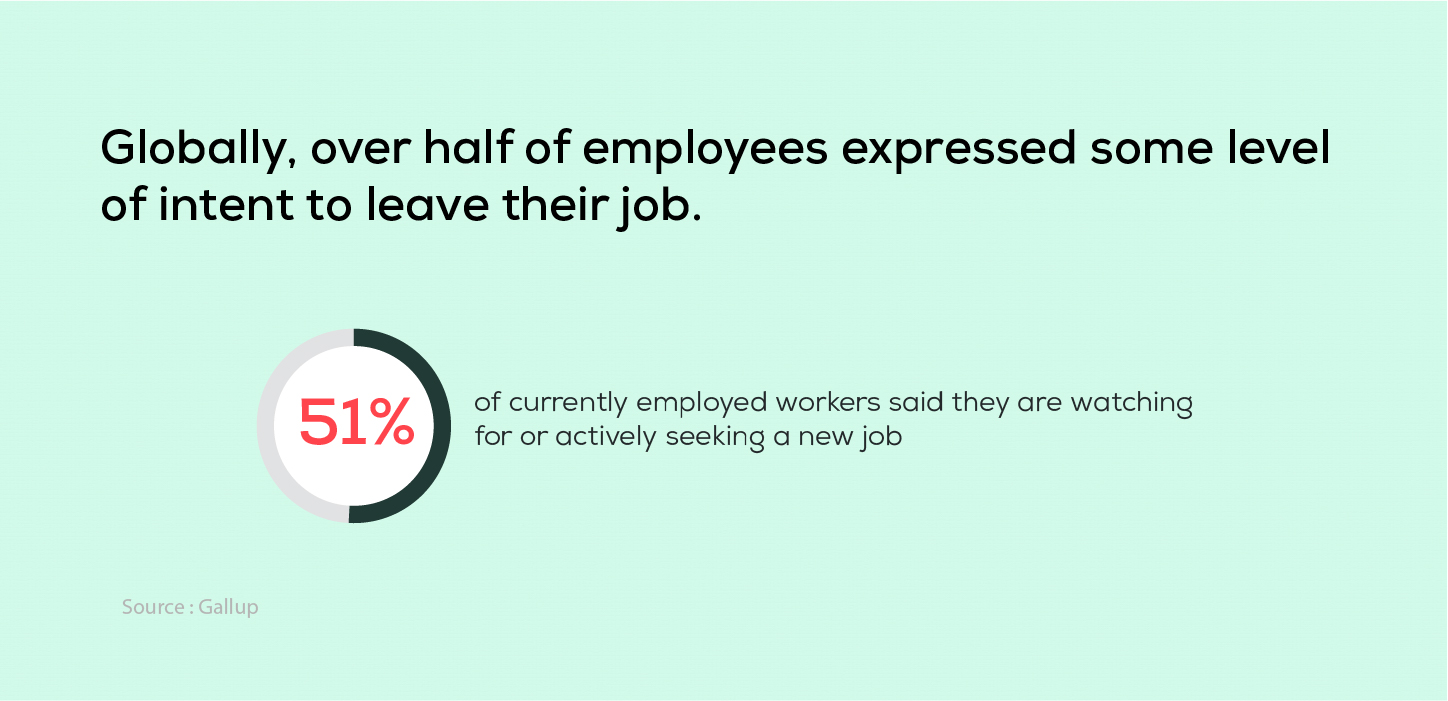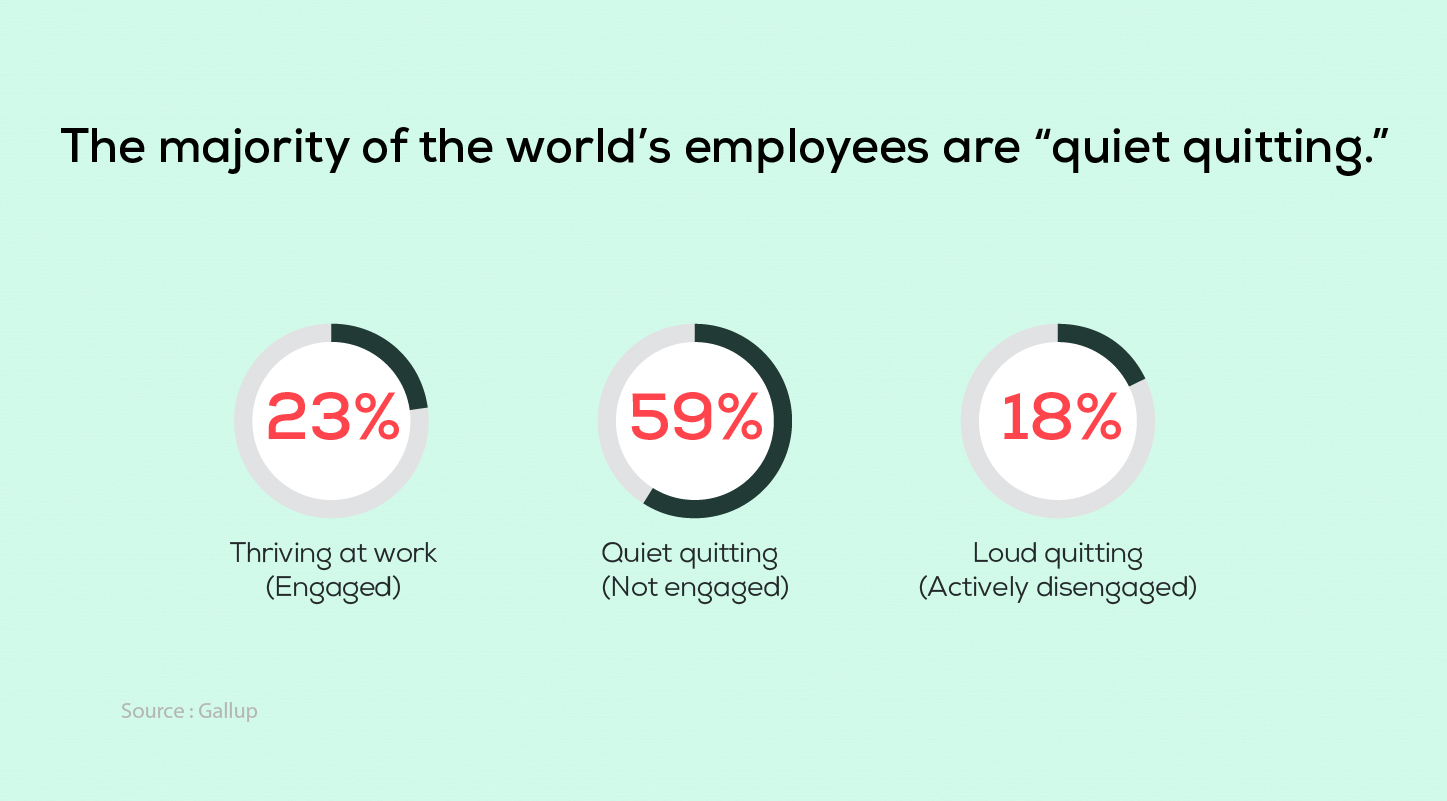The life of any organization is its workforce. Imagine the plight of the organization, if its workforce loses motivation. Therefore keeping your employees engaged is paramount as it helps them stay motivated, happy and cheerful throughout their tenure in your organization.
Whatever you do, do it with all your heart. If you can't do it with all your heart, then don't do it at all." – Confucius
At Inspirisys, we go above and beyond to ensure our teams not only find fulfilment in their work but also strengthen their bonds with their peers. We believe in cultivating amicable relationships that go beyond professional collaborations, where we're more than colleagues—we're a close-knit family.
Have a sneak peek into the vibrant camaraderie we share:
In this article, we will explore the causes of employee disengagement, strategies for prevention, and remedial measures.
What is the lack of Employee Engagement?
Employees are the powerful engines of an organization. As long as the engine is well-oiled and fuelled, it gives an amazing performance. The moment it is exposed to rust, neglect and lack of fuel, it becomes motionless. Employees are no different from these conditions. The moment employees are deprived of the right environment to grow, they deplete like withered flowers. Their passion takes a back seat and things go dull and dead.
The lack of connection with one’s workplace and work is often the major cause of disengagement for employees, and this absence of genuine connection resonates in their productivity and affects the organization on the whole.
As per the State of Global Workplace Report 2023, Engagement has 3.8 times as much influence on employee stress as work location.

Let us understand what could be the factors that cause disengagement and how we can actively engage them and create a happening workplace.
Most Common Reasons for Disengagement of Employees at Workplace
-
Ineffective Leadership Communication: Ineffective leadership communication refers to a situation where communication is conveyed vaguely or not conveyed at all. This can further manifest in various ways including insufficient information, lack of transparency or disconnect from the team leader and members.
-
Inadequate Recognition and Feedback: Recognising a job well done, coupled with constructive feedback for improvement, works like a fertilizer that boosts employee performance. When these two elements are absent, employees can easily feel demotivated and later lose interest in executing assigned tasks.
-
Limited Avenues for Career Growth: No employee wants to sustain in the same position throughout their tenure in the organization. They seek for better opportunities than aids in boosting not only their performance but also their career.
-
Discrepancy of Skills and Job Requirements: Imagine trying to fix a round peg in a square hole. This is exactly what an employee feels when they are put in a role that doesn’t allow them to leverage their skills.
-
Deficiency of Inclusivity and Diversity: When employees feel alienated in their team or workplace as a whole, they may easily lose interest, thinking that their inputs don’t matter. Lack of inclusivity and acceptance of diversity are among the most prominent reasons for employee disengagement.
-
Unhealthy Work Environment: After one’s home, the workstation is where employees spend most of their time. If the workplace generates excess stress, toxicity, bias or unsafe circumstances, that organization is at the risk of losing the employees along with their reputation.
-
Unstable work Life Balance: Major cause of burnout among employees is a weak work life balance. When employees’ personal time and space is occupied by professional commitments, burn out experience becomes high and leads to employee disengagement.
-
Lack of Employee Empowerment: When employees don’t feel valued or trustworthy by their team, their motivation and sense of responsibility dampens and affects their productivity and success.
-
Ambiguous Organizational Values: The values and mission statement of the organization must clearly communicate its purpose to the employees. If employees are misaligned with the vision, values and mission of the company, then there is a sure short impact on engagement.
-
Overload or Outdated Technology: Outdated technology hinders employees from performing at their best. Lack of proper training for the employees in understanding new technology can frustrate them and lead to disengagement.
Signs Indicating Lack of Engagement
-
Decline in Productivity: Disengaged employees might exhibit their struggle in accomplishing their regular tasks. They are often found struggling to deal with their work. Chronic absenteeism is the major red flag in employee engagement.
-
Conflict Environment: One of the underlying factors for disengagement of employees is conflict prone environment at workplace. If they often witness conflict in or around the team, they start working in isolation thereby affecting the collaborative spirit of the team. Additionally their enthusiasm diminishes whenever they are asked to work with the team.
-
Higher Employee Turnover Rate: A high Employee turnover rate suggests that something within the organization is not healthy, which is why employees are seeking better opportunities elsewhere.
Simon Sinek, an American author and inspirational speaker on business leadership, emphasizes the importance of training employees in human skills. Watch as Simon emphasizes significant changes that can improve employee engagement.
A majority of presently employed individuals, comprising 51%, have expressed their interest in either actively searching for or keeping an eye out for new job opportunities.

Across the global workforce, employees are classified in three categories -
-
Engaged : 23% -Thriving at work
-
Disengaged : 59% - Quiet Quitters
-
Actively Disengaged : 18% - Loud Quitters

Impact of Disengagement
Ever wondered why the spark in the eyes of your dear employees fades away? In fact, this lack of spark gradually seeps into every aspect of the work environment and impacts it drastically. Let us understand the factors that cause this butterfly effect.
-
Declining Efficiency: Disengaging energy is pretty harmful for an organization. Since a lot of work happens through collaboration, it naturally affects other’s productivity around. As a result, the most engaged workers lose enthusiasm towards work and end up producing mediocre results.
-
Pattern of Absenteeism: This is not very different from a school scenario where the child refuses to go to school quite often. Although the analogy is not about employees throwing tantrums, it rather reflects the disconnection towards the work, peers or work environment. This impacts productivity, leading to financial repercussions, temporary arrangements with additional cost, and the list goes on.
-
Disjointed Team: A disengaged employee who loses interest at work, will certainly want to stay away from the regular engagement with the team. This isolated pattern affects team dynamics, hindering the flow of collaboration, creation and innovation.
-
Customer Dissatisfaction: The disengaged client-facing personnel, who have direct contact with your clients, can significantly impact them. In such a scenario the impact is not only on customer satisfaction but also on the organization’s values and reputation.
-
High Turnover Thoughts: Reaching the tipping point of their disengagement, employees immediately seek other job opportunities elsewhere, forcing organizations to undergo the tedious tasks of recruiting and onboarding. This cycle brings instability and disruption within the organization.
-
Employee Well-being: In today’s times, where mental health and physical health are crucial, the disengaged employees become vulnerable to health risks. Ideally, a workplace must contribute to the overall wellness of the employees; however, disengagement phase often leads to burn out, stress and dissatisfaction negatively impacting their health.
Measures to Tackle Employee Disengagement
Implement some actionable solutions to boost the morale of your employees, reenergise your teams, unlock their potential and see your organization flourish.
-
Foster open communications where employees feel heard and valued: Implementing regular town hall meetings and allowing employees to unhesitatingly express their thoughts and concerns, makes them feel that they are integral part of the organization. Establishing an anonymous suggestion box may encourage them to provide honest feedback. Open dialogue should be encouraged at all levels.
-
Give constructive feedback to the employees: Conducting regular performance reviews that focus on strengths and areas for improvement, motivate the employees to perform better. Leading them by example is the best way to help employees grow. Encouraging a culture of continuous feedback, emphasizing a two-way communication approach stimulates healthy interaction among teams.
-
Enhance growth and development opportunities: Offer training programs, workshops, and courses that help employees acquire new skills. This will enable them to see a clear career paths and opportunities for advancement. Facilitate mentorship programs to that aid in knowledge transfer within the organization.
-
Create a positive environment and promote holistic wellness: Establishing a comfortable and aesthetically pleasing workspace is very crucial for cultivating a positive atmosphere. Employees thrive well in such environments, leading to greater success. Initiating wellness programs, such as yoga classes or mental health workshops will boost their physical and mental strength. Encouraging regular breaks and discouraging excessive overtime is equally vital to prevent burnout and ensure long-term productivity.
-
Encourage novel ideas, approaches and solutions through collaboration: Fostering a collaborative culture brings in inclusivity where diverse opinions are valued. In order to encourage team work and creativity, they can be put up in cross-functional projects.
-
Cultivate a sense of community: Team-building activities and events can aid in building the camaraderie among employees. Furthermore, creating social spaces within the workplace can facilitate casual interactions. It is also essential to encourage employee resource groups to build a sense of belonging.
-
Recognize their achievements and reward them for a job well done: Organizations should recognise the diligent efforts of their employees by implementing a healthy employee recognition program and offering both monetary and non-monetary rewards for outstanding performance. Publicly acknowledging and celebrating their achievements not only boosts their self-confidence but also enhances their respect towards the organization.
-
Arrange recreational activities, where staff can unwind from the daily grind and come back to work rejuvenated: Team-building retreats or off-site events strengthen workplace relationships. It is even better if recreational spaces are provided within the workplace. Flexible work schedules or remote work options (when necessary) allow them to work more efficiently.
-
Conduct employee surveys to know your employees' needs: Addressing the needs of the employees is vital for any organization. Regularly gathering feedback through surveys helps in comprehending employee satisfaction. The survey results aid in identifying areas for improvement and address concerns.
- Promote healthy work-Life balance: It is essential to set clear expectations for working hours and overtime. Organizations must discourage a culture of excessive overtime and respond immediately to signs of burnout among employees. Simon Sinek suggests we see work-life balance from a novel perspective. Segregating the two is not the way to go; rather, one should aim for harmonious integration of work and personal life.
Listen to Simon Sinek to learn practical tips on work-life balance.
The Leadership Imperative
Leadership goes beyond managing or guiding the organization. It focuses on creating a positive environment, strengthening relationships, cultivating a sense of belonging and a sense of connection among team members.
Leaders play a crucial role in influencing the organization’s culture. Therefore it is important that they set the right tone, values and practices that shapes a broader work environment where every member thrives and succeeds in different spheres.
One cannot see courage and leadership separately. According to Simon Sinek, “Courage is the most underrated characteristic in leadership”. Know what a great leader looks like in the words of Simon.
Conclusion
Identifying employee disengagement is not the finish line, but rather the very first step. The real success journey starts only when organizations take proactive measures to prevent such disengagement. However, one cannot rest thinking this is a one-time process; this is certainly a recurring endeavour. Remember, a happy workforce is equal to a happy workplace that yields happy results. While consistently keeping employees motivated can be demanding, ultimately, it is their well-being that stands as a foundation of a thriving organization.



